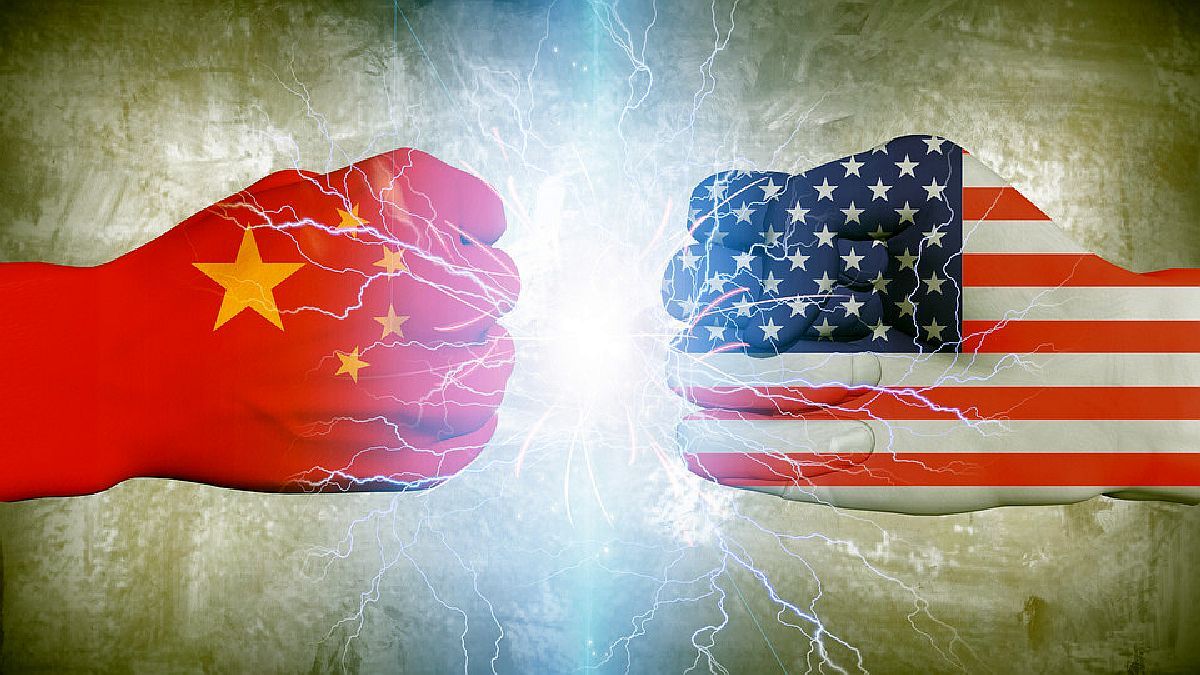What are tariffs?
In that sense, it must be explained that tariffs are taxes that governments apply to imported goods in order to make them more expensive and make national products more competitive in price. However, eThis measure can also generate negative collateral effects, such as the increase in inputs for the crazy industryL and reduction of global trade.
The industries most affected by the tariffs imposed by the US have been the manufacturing, steel, aluminum, technology and the automotive sector. In China, the impact is considerable, with mass layoffs and the closure of factories due to the decrease in US demand.
According to a study by Stanford University, Each 1% increase in tariffs reduced the margins of Chinese suppliers by 0.35%. In addition, Reuters estimated that around 3.5 million jobs in Chinese manufacturing were lost due to the commercial war initiated in 2018.
Given this situation, some analysts believe that the Chinese government could intervene with subsidies and support measures, as it has done in the past. However, the real estate crisis and the high debt of local governments make it difficult to offer such generous incentives as in previous years. From Beijing, the message for exporters is to diversify markets and strengthen domestic consumption, although these strategies face obstacles due to overcapacity and low domestic demand.
Trump’s passion for taxing the competition
Trump considers that tariffs are a way of protecting the national economy from global unfair competition and a negotiation tool to obtain better conditions for the US. However, Concern for a commercial war is affecting markets and generating fears of a recession in the US.
Trump ratified that he will impose a series of reciprocal tariffs against countries that apply US exports rates, promising to match the tariffs of those nations. In February, he signed a memorandum that ordered US trade officials to review country by country and prepare a list of specific countermeasures.
Last week, he suggested that he could reduce his reciprocal tariff plan, imposing in some cases lower rates than those countries apply to the US.
Despite Trump’s goal to bring manufacturing back to the US, many US companies have found unfeasible to transfer production due to costs and quality. In response, some firms are choosing to move their operations to other Asian countries, such as Vietnam, which implies an increase in prices for US consumers.
Trump has defended tariffs as a tool to achieve better commercial conditions for the US, but the uncertainty generated has affected markets and aroused fears of recession. In this scenario, the trade war remains a key factor in the global economy, with consequences for both countries that impose these measures and those who suffer from them.
One by one: the global industries most affected by the commercial war
The industries most affected by the commercial war and the imposition of tariffs are those highly dependent on international trade and global supply chains. Next, an analysis of the most vulnerable sectors:
1. Technology and semiconductors
The commercial war between the US and China has had a significant impact on the technology industry. Companies such as Apple, Nvidia and Qualcomm depend on supplies and manufacturing in Asia. Tariffs increase production costs and affect the competitiveness of these companies. In addition, the export restrictions of advanced chips have limited China’s access to semiconductors, harming giants such as Huawei.
2. Automotive
The automotive industry depends on a globalized supply of pieces and materials. Tariffs on steel and aluminum have increased production costs for manufacturers such as Ford, General Motors and Toyota. In addition, reciprocal measures affect the export of vehicles to key markets such as China and the European Union.
3. Steel and aluminum
One of the most impacted sectors since 2018 has been industrial and bad metals for Argentina. The rates imposed by the US to steel and aluminum make production more expensive in key sectors such as construction and aerospace industry. Companies such as Arceormittal and Alcoa have experienced volatility in their costs and margins.
4. Consumer goods and retail
Companies that depend on manufacturing in Asia, such as Nike and Walmart, have seen an increase in import prices, which translates into higher costs for consumers. This affects demand and can reduce gain margins in the retail sector.
5. Energy and raw materials
Tariffs have also affected oil and gas trade. China, for example, imposed tariffs on Liquefied Natural Gas (LNG) imports of the US, affecting companies such as Cheniere Energy. In addition, commercial tensions can alter the demand for copper and lithium, essential for renewable batteries and energy.
Vaca Muerta Artificial Intelligence Petroleum Globant
Tariffs have also affected oil and gas trade
6. Pharmaceutical industry and medical devices
Commercial restrictions can make the importation of medicines and medical equipment more expensive. Many pharmaceuticals depend on active ingredients manufactured in China and India, which could affect the production and availability of certain medications.
7. Agriculture and food
Also very bad for Argentina. Reciprocal tariffs have harmed US farmers, especially soybeans, corn and pork, due to China’s reprisals. Companies such as Cargill and Tyson Foods have seen fluctuations in their exports and prices.
The impact of the commercial war on investments
The last report of BUENBIT It indicates that despite the turbulence in the markets, recent economic data have showed some resilience. Employment continues strong, with improvements in real wages and inflation that was slowed for the first time in seven months.
“However, the deterioration of fiscal policy remains a key concern, especially given the possibility that Congress fails to address the debt roof before August 2025, which could lead to the US to a non -payment situation. The combination of a commercial war in expansion and a growing fiscal risk raises uncertainty about future growth and could limit the ability of the Fed to sustain its stable rates policy.” Broker
“Our base scenario anticipates a moderation of growth in the US, but without recessionwith resistant inflation and stable interest rates in the short and long term. We consider that the recent correction in market valuations was an overreaction, since business foundations remain solid, “he analyzes.
In this context, Exchange recommends:
- Variable rent: Prioritize defensive actions in the US and increase exposure in European markets, especially Germany.
- Fixed income: Increase positions in US Treasury bonds in the middle section of the curve, taking into account the risk associated with debt roof.
- Raw materials: Maintain gold positions as coverage in the face of market volatility and fiscal uncertainty.
- Geography: Favor markets with better recent performance such as Europe, China and Brazil, avoiding overexposure to assets sensitive to the US fiscal crisis.
It happens that the current uncertainty derived from the tariff and fiscal policy in the US generated a change in market expectations, moving it from the soft landing stage that predominated at the beginning of the year. However, recent economic data and stability in corporate foundations suggest that there are opportunities in defensive sectors and geographies less affected by commercial and fiscal tensions. Maintaining a disciplined approach in asset allocation will be key to travel volatility in the coming months.
Source: Ambito




